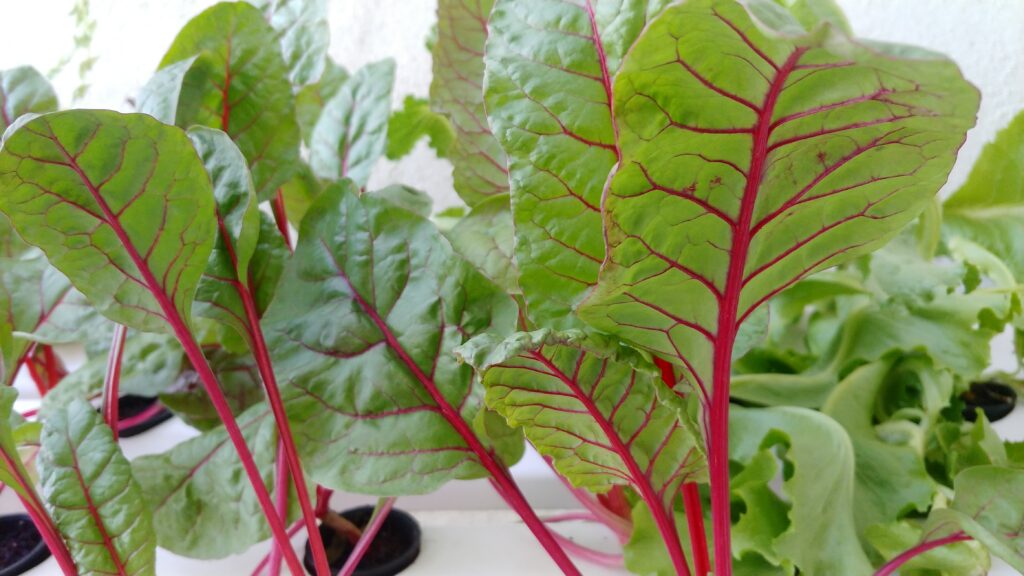Are you a plant lover and aspiring home gardener, eager to grow an abundant supply of fresh herbs, veggies, or fruits? Look no further! This article will explore the age-old question: Is aquaponics or hydroponics better for growing your favorite greens? Both methods have gained popularity in recent years, providing efficient and sustainable solutions for indoor gardening. Join us as we dive into the world of aquaponics and hydroponics to help you make an informed decision about which approach is the ideal match for your green thumb ambitions.
Cost
Initial investment
When it comes to the initial investment, aquaponics and hydroponics systems can vary in cost. Both require the purchase of specific equipment such as grow beds, pumps, and lighting systems. However, aquaponics systems tend to be slightly more expensive due to the additional cost of setting up and maintaining the fish tank. The size of your system will also impact the initial cost, with larger systems requiring more resources and therefore, a higher investment.
Operational costs
In terms of ongoing operational costs, aquaponics and hydroponics are relatively similar. Both systems require a certain amount of electricity to power the pumps and lighting, as well as periodic maintenance and replacement of certain components. However, aquaponics systems do have the added cost of fish feed and occasional water quality testing, which can contribute to slightly higher operational expenses compared to hydroponics.
Water Usage
Amount of water required
When it comes to water usage, hydroponics systems generally require less water than aquaponics systems. In hydroponics, water is recirculated within the system, so the plants only take up what they need, minimizing water waste. On the other hand, aquaponics systems need a continuous flow of water to maintain the health of the fish. While the water is filtered and reused, the overall volume of water needed in aquaponics is higher than in hydroponics.
Water conservation
Both aquaponics and hydroponics systems have the potential to be water-efficient compared to traditional soil-based growing methods. In hydroponics, the recirculation of water greatly reduces water waste. Additionally, by closely monitoring and adjusting the nutrient solution, the water can be optimized for efficient plant growth. In aquaponics, water conservation is achieved through the symbiotic relationship between fish and plants. The fish waste provides nutrients for the plants, and the plants uptake these nutrients, helping to keep the water clean and reducing the need for frequent water changes.
Nutrient Management
Type and availability of nutrients
Both aquaponics and hydroponics provide controlled environments where the nutrient availability can be precisely regulated. In hydroponics, nutrients are delivered directly to the plant roots through the nutrient solution, allowing for optimal nutrient uptake. Aquaponics, on the other hand, relies on the organic waste produced by the fish to supply essential nutrients to the plants. The fish waste is broken down by beneficial bacteria in the system, converting it into forms that the plants can readily absorb.
Efficiency of nutrient uptake
When it comes to nutrient uptake efficiency, hydroponics generally excels. Since the nutrients are directly supplied to the plant roots in a readily available form, plants can efficiently uptake the necessary nutrients without any potential limitations from external factors like fish health or water quality. In aquaponics, the nutrient availability is dependent on the health and feeding habits of the fish. While the nutrient uptake can still be efficient in aquaponics, there may be fluctuations in nutrient levels due to fish health or feeding adjustments, which can impact overall plant growth.
Plant Growth
Rate of growth
Both aquaponics and hydroponics facilitate accelerated plant growth compared to traditional soil-based methods. However, hydroponics may have a slight edge in terms of growth rate. In hydroponics, as the plants receive a constant and balanced supply of nutrients, water, and oxygen, they can focus their energy on growth and development. Aquaponics systems, while still promoting healthy plant growth, may have slower growth rates due to potential fluctuations in nutrient availability based on fish health and feeding.
Size and yield of plants
Both aquaponics and hydroponics have the potential to yield impressive plant sizes and abundant harvests. However, hydroponics may offer more control over plant size and yield due to the ability to finely tune the nutrient solution to meet the specific needs of different plants. Aquaponics systems, while still providing ample nutrients for plant growth, may have slight variations in nutrient availability based on fish health, which can impact the ultimate size and yield of plants.
Crop Variety
Types of herbs/veggies/fruits that can be grown
Both aquaponics and hydroponics offer a wide range of possibilities for growing herbs, veggies, and fruits. In hydroponics, virtually any plant can be grown as long as the necessary nutrients and environmental conditions are provided. This includes leafy greens, herbs, tomatoes, strawberries, and even larger fruiting plants like cucumbers and peppers. Similarly, aquaponics systems can support a diverse range of plants, with the added benefit of being particularly well-suited for leafy greens and herbs due to their ability to efficiently utilize the nutrients readily available in fish waste.
Suitability for specific crops
When it comes to specific crop suitability, both aquaponics and hydroponics have their strengths. Hydroponics is often preferred for larger fruiting plants, as the nutrient solution can be precisely tailored to meet the specific needs of these plants. Aquaponics, on the other hand, is particularly well-suited for leafy greens and herbs, as these plants can thrive on the organic nutrients provided by the fish waste. However, with proper adjustments and monitoring, both systems can be adapted to support a wide variety of crops.
Maintenance
System complexity
Both aquaponics and hydroponics systems may require some level of maintenance, but the complexity can vary. Hydroponics systems usually involve monitoring and adjusting the nutrient solution, ensuring proper water flow, and maintaining the components such as pumps and timers. Aquaponics systems require similar maintenance tasks, but with the additional responsibility of maintaining the health and well-being of the fish. This includes monitoring water quality parameters, feeding the fish, and occasionally observing for signs of illness or stress.
Labor requirements
The labor requirements for both aquaponics and hydroponics systems are relatively similar. Both systems require regular monitoring and maintenance, including tasks such as checking water quality parameters, adjusting nutrient levels, pruning plants, and ensuring proper functioning of the equipment. In larger systems, the labor requirements may increase, mainly when it comes to tasks such as fish feeding and water quality testing in aquaponics. However, with proper planning and organization, these tasks can be efficiently managed.
Environmental Impact
Energy consumption
Both aquaponics and hydroponics systems require electricity to power pumps, lights, and other equipment. The amount of energy consumed can vary depending on the size of the system and the specific setup. While aquaponics systems may have slightly higher energy demands due to the need for maintaining the fish tank, modern energy-efficient equipment can help minimize electricity consumption in both systems. Additionally, using renewable energy sources such as solar power can further reduce the environmental impact of energy consumption.
Carbon footprint
Compared to traditional soil-based agriculture, both aquaponics and hydroponics have the potential to significantly reduce carbon emissions and environmental impact. By using controlled environments and optimizing resource usage, these systems can minimize the need for chemical fertilizers, pesticides, and excessive water consumption. Furthermore, the ability to grow crops locally using these methods can reduce transportation-related emissions associated with long-distance shipping of produce.
Pest and Disease Control
Prevention measures
Both aquaponics and hydroponics systems offer inherent pest and disease control advantages compared to conventional soil-based practices. The absence of soil eliminates many soil-borne pests and diseases commonly encountered in traditional farming. Additionally, the controlled environments of aquaponics and hydroponics reduce exposure to external pests. Implementing preventive measures such as regular system inspections, maintaining proper hygiene, and using organic pest control methods can help further mitigate the risk of pest and disease issues.
Treatment effectiveness
In the event of a pest or disease outbreak, the treatment effectiveness in aquaponics and hydroponics can vary. Hydroponics systems often rely on organic pest control methods, such as introducing beneficial insects or using natural pest deterrents. These methods can be effective but may require additional monitoring and intervention. Aquaponics systems, on the other hand, may have an advantage in disease control due to the constant supply of beneficial bacteria from the fish waste, which can help combat harmful pathogens. However, immediate and appropriate action is still necessary to prevent disease spread.
Taste and Flavor
Impact on taste
Both aquaponics and hydroponics can produce high-quality, flavorful crops that are comparable to or even better than conventionally grown produce. By providing precise control over nutrient delivery and growing conditions, these systems can optimize plant growth and enhance the taste of herbs, vegetables, and fruits. Eliminating the use of chemical fertilizers and pesticides commonly used in traditional farming can also contribute to a cleaner and more natural flavor in aquaponics and hydroponics.
Nutritional value
Aquaponics and hydroponics systems have the potential to produce crops with excellent nutritional value. By closely monitoring and adjusting the nutrient solution, these systems can ensure that plants receive the necessary vitamins, minerals, and other essential nutrients. Some studies have even shown that hydroponic and aquaponic-grown produce can have higher nutrient content compared to conventionally grown crops. The absence of soil can also eliminate the risk of nutrient deficiencies or imbalances commonly associated with certain soil types.
Flexibility and Scalability
Adaptability to different setups
Both aquaponics and hydroponics offer flexibility and adaptability to different setups. Whether you have limited space for a small indoor system or room for a large-scale commercial operation, both methods can be adjusted to meet your needs. Hydroponics systems can be designed to fit a variety of spaces, including vertical gardens, rooftop gardens, and even shipping containers. Aquaponics systems can also be tailored to different spaces, although the additional consideration of fish welfare and environmental parameters should be taken into account.
Expansion possibilities
Both aquaponics and hydroponics systems offer opportunities for expansion. With careful planning and appropriate infrastructure, you can easily scale up your operations to increase production capacity. This can be particularly advantageous for commercial growers looking to meet growing demands. Whether it’s adding more grow beds, increasing the number of fish tanks, or integrating new technologies and automation, both aquaponics and hydroponics provide the flexibility to grow and expand your operation over time.
In conclusion, both aquaponics and hydroponics are excellent options for growing herbs, veggies, and fruits. Each method has its strengths and considerations, and the choice ultimately depends on your specific needs and preferences. Consider factors such as initial investment, water usage, nutrient management, plant growth, crop variety, maintenance requirements, environmental impact, pest and disease control, taste and flavor, as well as flexibility and scalability when deciding which system is right for you. With either method, you can enjoy the benefits of year-round, controlled cultivation while reducing water usage, environmental impact, and potentially even improving the taste and nutritional value of your crops.


